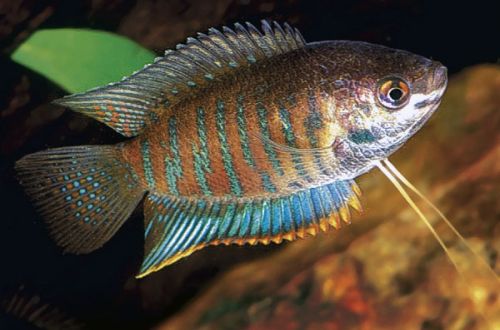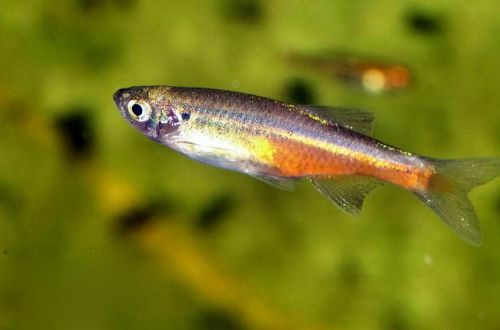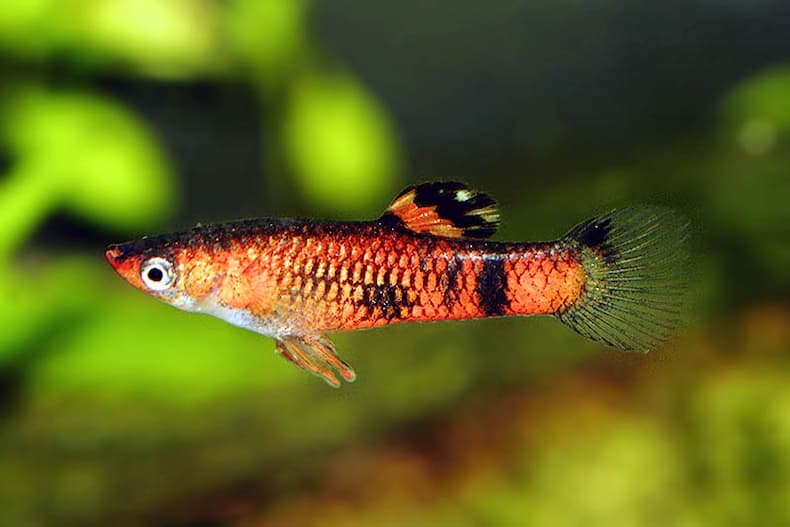
Micropecilia picta
Micropoecilia Picta or Marsh Guppy, scientific name Micropoecilia picta, belongs to the Poeciliidae family. It was first introduced as an aquarium fish in 1939 in Germany, however, under a different name Micropoecilia melanzonus. Since then, it has been occasionally found in home aquaria, but much less frequently than the closely related Guppy species.

Contents
Habitat
Native to Central and South America. The natural range extends from Guatemala to Brazil, wild populations are also found on the island of Trinidad. Inhabits river deltas and coastal swamps, where fresh water mixes with sea water. A typical biotope is a quiet shallow backwater well warmed by the sun with an abundance of aquatic plants.
Brief information:
- The volume of the aquarium – from 40 liters.
- Temperature – 26-28°C
- Value pH — 7.5–8.2
- Water hardness – 20–40 dGH
- Substrate type – any
- Lighting – any
- Brackish water – recommended at a concentration of 5-20 grams of salt per liter of water
- Water movement – light or moderate
- The size of the fish is 3–5 cm.
- Food – any food
- Temperament – peaceful
- Content – in a group of relatives and together with other species
Description
Males reach a length of about 3 cm. Coloring depends on the specific region of habitat. For example, representatives from the island of Trinidad are predominantly red in color, while fish from the Orinoco Delta are gray-orange. A characteristic feature in the body pattern is a black spot on the upper part of the tail.
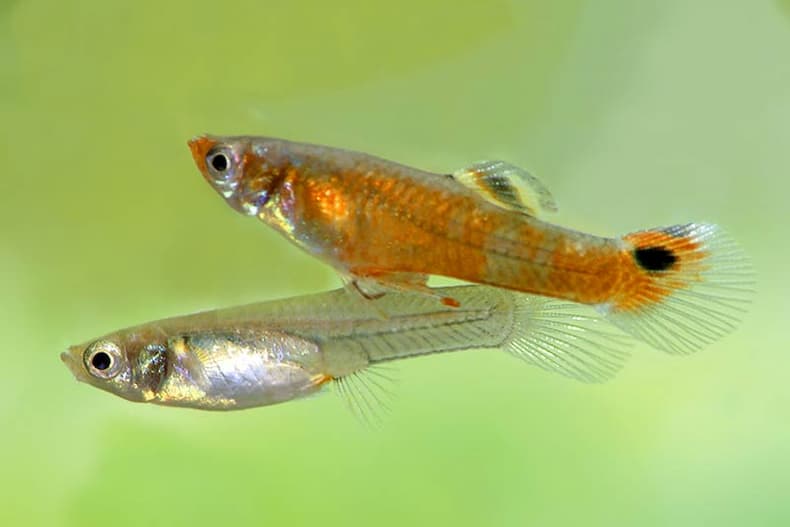
Females are noticeably larger – up to 5 cm in length. The abdomen is rounded, increases during the spawning period. The coloration is solid gray with a silvery belly.
Food
Omnivorous species. Will accept popular types of food of suitable size in dry, frozen and live form.
Maintenance and care, arrangement of the aquarium
Due to its modest size, it can be kept in aquariums of various sizes. Not demanding on the choice of design, however, it is recommended to use a large number of aquatic plants, including floating ones. Shells, limestone fragments and other carbonates will help maintain high water hardness.
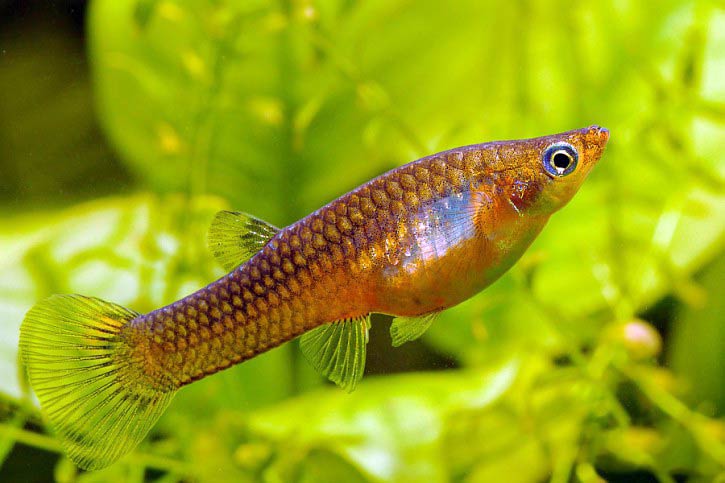
Prefers to be in a brackish environment. In nature, the salinity level is not stable and constantly fluctuates from 5 to 20 or more grams of salt per liter of water. Similar periodic changes are worth recreating in an aquarium. Micropecilia picta is also able to live in fresh water, but in these conditions the reproduction process is difficult.
For long-term maintenance, it is important to provide clean water with a low level of contamination, for example, the concentration of nitrates should not exceed 50 mg/l. A mandatory procedure is the weekly replacement of part of the water (10-15% of the volume) with fresh water with regular removal of organic waste.
Behavior and Compatibility
Peaceful moving fish. The swamp guppy would make a great addition to a community of similarly miniature species. No intraspecific conflicts were noted. Polygamous males prefer to be in the company of several females.
Breeding / breeding
They are viviparous fish that do not have the stage of eggs. The fry are already fully formed. As noted above, fresh water is not the best place for breeding. Optimum conditions are achieved in slightly salty warm (about 25°C) water with a pH value of 8.0.
Parental instincts are not developed; to protect the fry, they should be transplanted into a separate tank. Feed with microfood (Artemia nauplii), crushed dry flakes, special suspensions.
Fish diseases
The main causes of disease are unsuitable habitat, poor feed quality and injury. By eliminating these reasons, you can provide the fish with a long and comfortable life.



